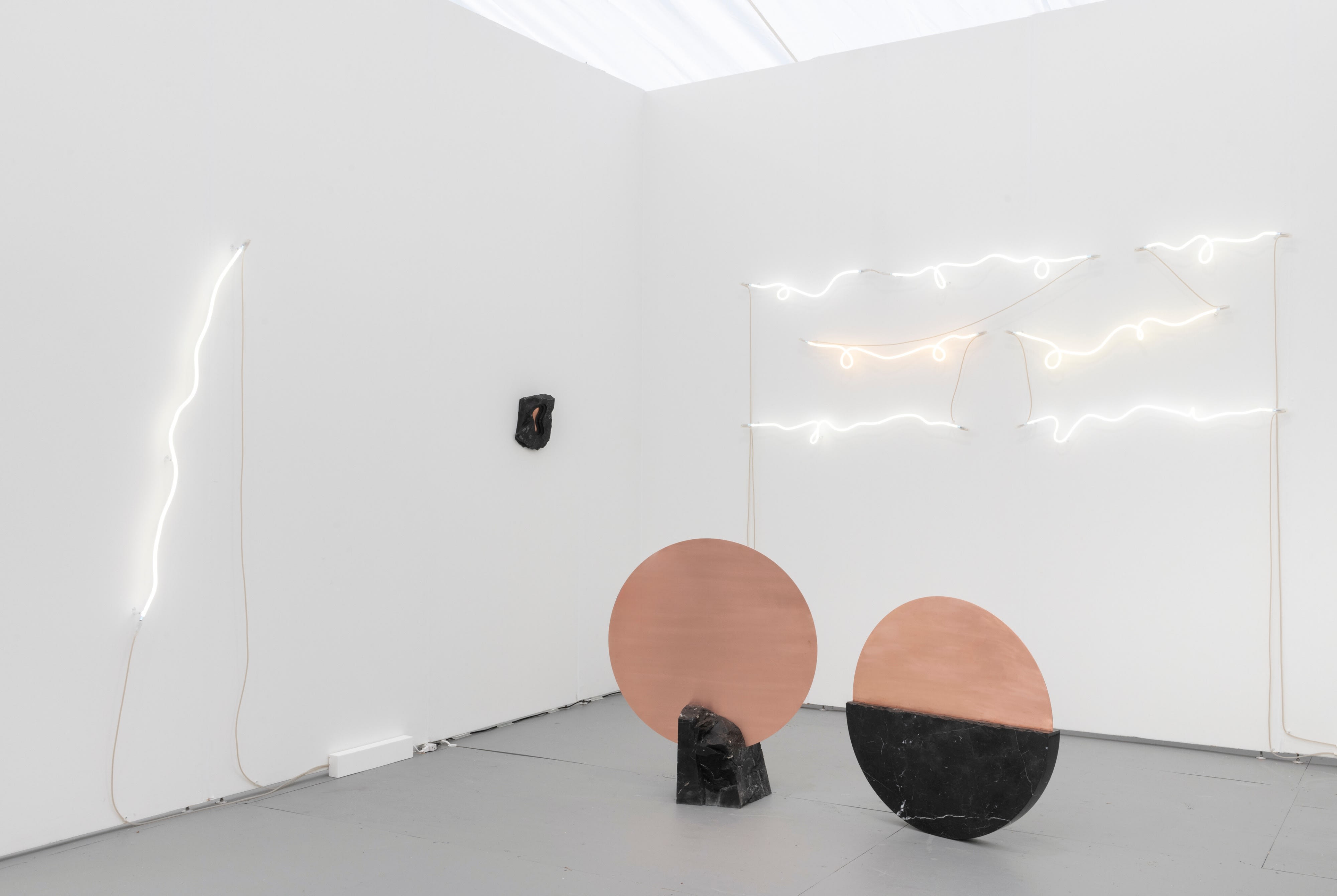
Installation view: Untitled Art Miami Beach Yi Gallery Booth featuring Karian Amaya and Annesta Le
Interview with Cecilia Jalboukh of Yi Gallery, by Emily Burns
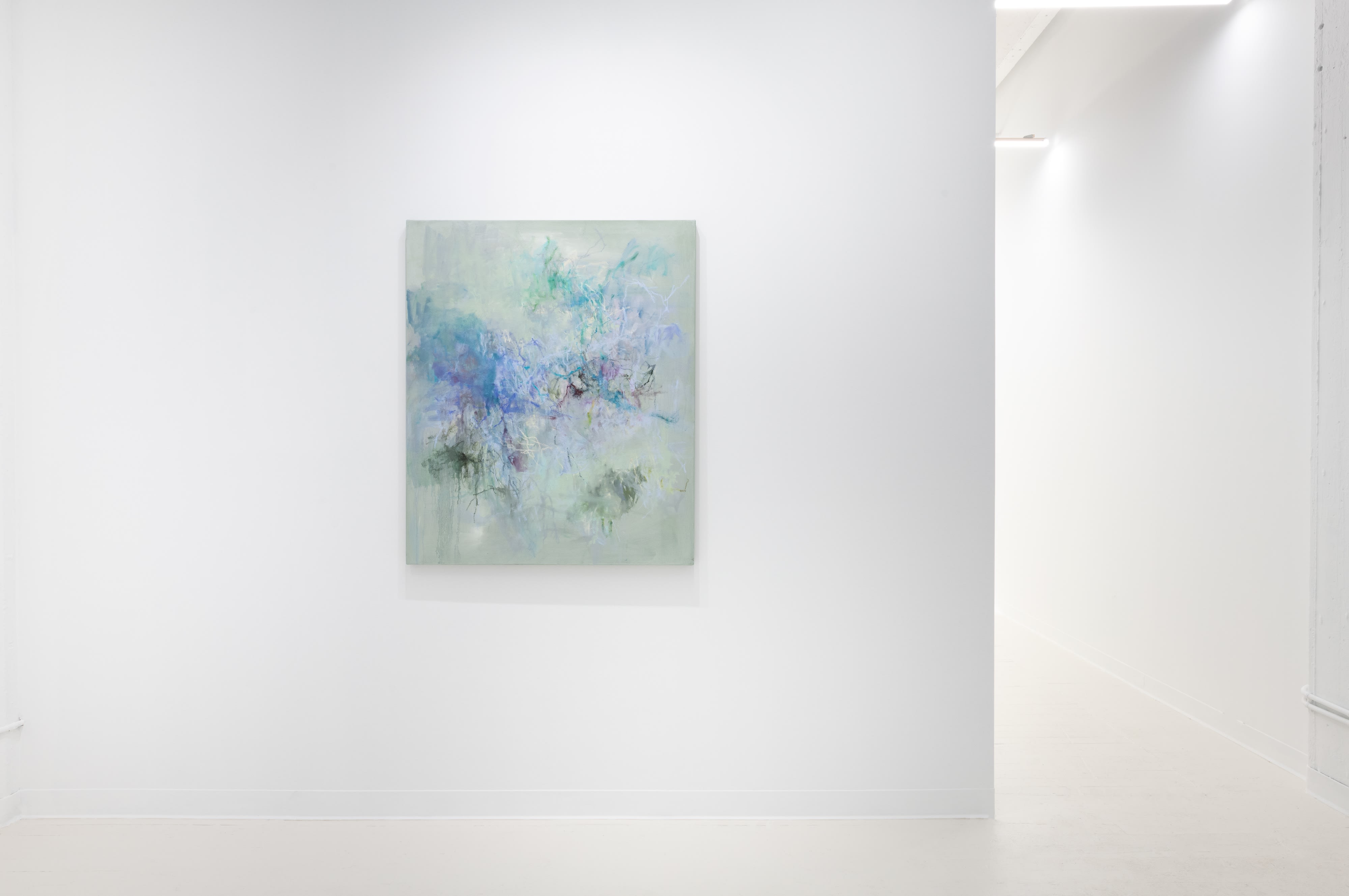
Installation view: 2023, Elizabeth Gilfilen, Territory 1, 2023, Oil on canvas
Hi Cecilia! Can you tell us a bit about you and your background and how you became involved with the visual arts?
I grew up in the culturally rich city Nanjing, China when the country was going through tremendous economic and social change. My father took me to violin lessons and taught me to look at traditional art - calligraphy and landscape paintings. Although my parents didn’t work in the arts, art and culture were very important to us. I remember we always had books, in Chinese and English, everywhere at home. My first real encounter with contemporary art happened when I was a teenager and an exchange student in Germany. I was blown away by what I experienced. I decided to study abroad and aspired to have a life in the arts. After high school, I moved to New York. My degree was in media studies and art history. I worked in the corporate world for several years before taking Art Business classes at NYU night school. I finished the program while working full time. I spent my entire twenties working and learning in New York City—visiting galleries, museums, theaters, discovering alternative spaces and meeting artists. It was a transformative experience.
Yi Gallery is situated inside Industry City, on the Brooklyn waterfront. Can you tell us the story of how the gallery got started and how you found this location?
It first started as a curatorial project. My friend Jamie Martinez, who runs the Border Gallery, invited me to share a small project space. Yi Gallery and The Border alternated our experimental shows (2020-2021). When I decided to pursue a full-time gallery program with an independent space, the location of Industry City in the Sunset Park neighborhood was most convenient and practical. I’m a mom of two young children. When I signed the lease, my younger one was still a baby, about to turn one. I knew I wanted to be very present in running the gallery but my family is very important to me, so the commute has to be short. Sunset Park boasts an exciting emerging art scene with Art Cake, The Brooklyn Rail, NARS Foundation, BioBAT, Court Tree already here, and is not far from where I live in Brooklyn. The gallery, a modestly sized post-industrial studio space, features beautiful high ceilings. I built it out with so much love. We moved in not long after Covid, when most galleries were still operating by-appointment only. I wanted to develop a meaningful exhibition program and grow slowly, so the upper floor location made sense at the time. I wish it’s more accessible to the public now that our traffic has greatly increased and more people want to find us easily. Being on the upper floor means we get incredible natural light, which enhances the viewing experience and gives our artists a creative foundation to experiment with their installations.
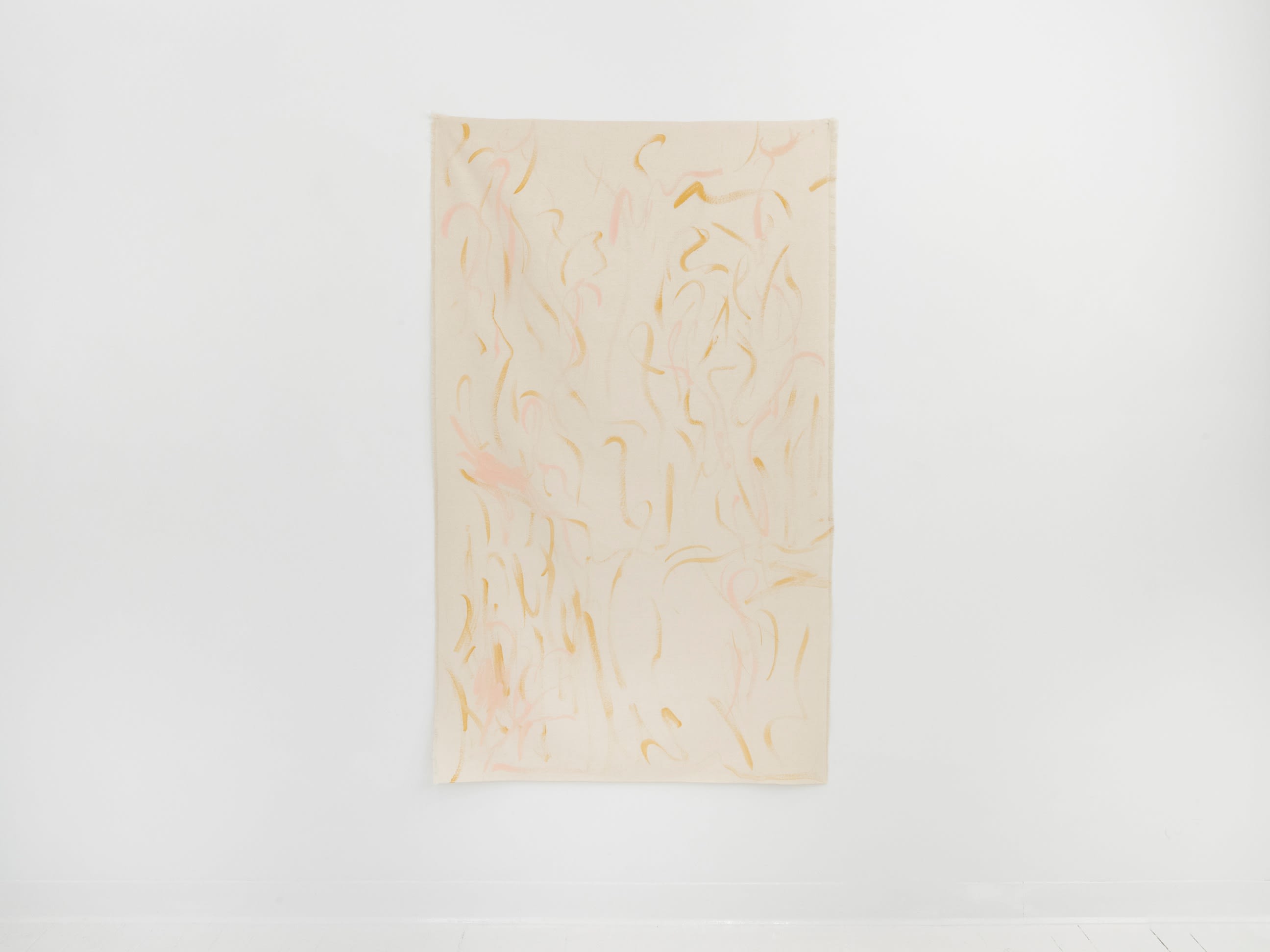
Installation view: 2023, Margrethe Aanestad Tales of Traces of Glimpses III, Part 1, 2018 Acrylic on raw linen canvas
Prior to operating the physical space, you ran the project as a nomadic curatorial endeavor. Was the goal always to have a permanent home for the gallery? How do these two modes compare in your experience?
Yes, a permanent home was the goal. The previous nomadic endeavor helped me learn, fail, explore and experiment. It’s our third year in the current space, mounting five shows a year. The gallery space is for both our artists and the community. The community includes peers, curators, critics, general public and patrons. It’s the place where art and conversations happen. And happen on a regular basis.
You have shown many different artists working in a wide range of media, is there a particular type of work that you are interested in showing? Is there a thread that is important to you across these shows?
Artists are the soul and their work shapes the gallery program. What unites the artists here are their shared pursuit for truth and beauty, and their differences. Medium and style are not really on my mind. Formal investigation, process and materiality are important. But what I value the most is the strong content drive behind forms, and married to forms. They are inseparable. I made a conscious decision to build the gallery roster with half local artists and the other half out of state / international. This reflects the energy and diversity of Brooklyn. The curatorial thread was not very clear across the first few shows (I’m quite self critical when I look at past work). But I think it has emerged after last year’s rigorous programming. From installation, sculpture, neon to painting, it is the poetry in an artist’s work that I look for. And what makes a work poetic varies to different people in different contexts. This difference cannot be overlooked because that’s where critical discourse takes place. Other parameters feel too limiting. It’s a question of freedom and inclusivity, not only in demographic representation, but more in thinking. A gallery program should ideally be tight enough to ensure highest quality, but open enough to always allow new ideas to come in.
Do you like to stick to a routine or schedule, or does your schedule vary from day to day? What is an ideal day for you?
I find it very helpful to have a routine. I start the day early once the kids are in school. Social calendar is not super active—atypical for an ambitious gallerist—but I’m a busy working mom and by now I accept it is impossible to do it all. Our exhibition installs are usually extremely intense and can stretch multiple days or weeks. Since I’m in the gallery on Saturdays, my Sundays are strictly reserved for family. I make sure there’s always time on my schedule to check in with artists regularly. I travel and visit all my artists in their studios. I also make every effort to engage and assist clients. When they need something from me, I make time. An ideal day is placing a work and knowing it goes to a meaningful collection.
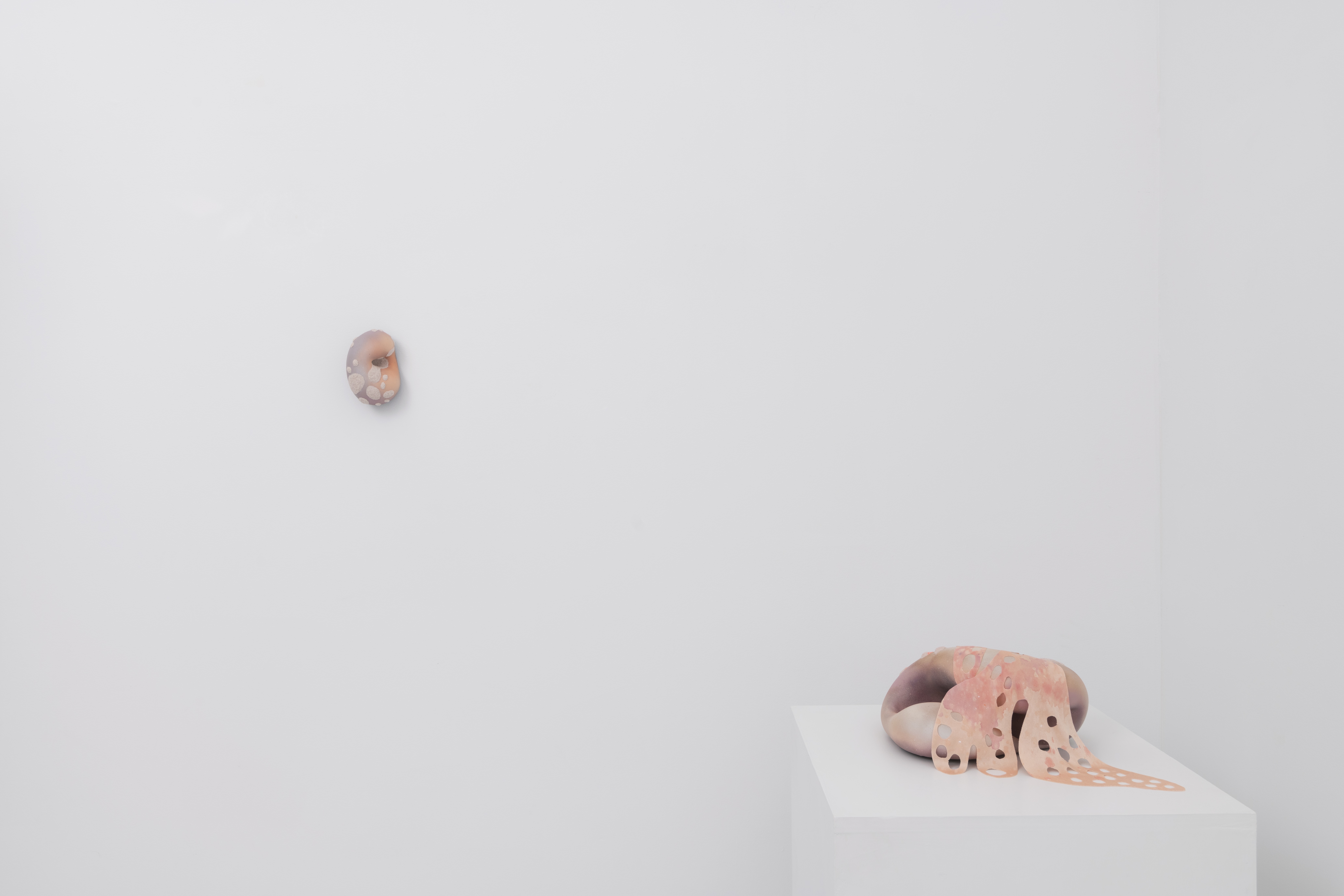
Installation view: 2022, Kate Casanova, Spotted Blush (L), 2022, Polymer modified gypsum, paper clay, glass beads, acrylic paint; Spotted Flush (R), 2022, Polymer modified gypsum, hand-dyed fabric, paper clay, glass beads, acrylic paint
Have you had any epiphanies recently that have changed the course of your work or caused you to shift directions?
I’ve learned from experience that showing in person is important. PDFs and JPEGs do not suffice. I’ll be making room to rotate inventory pieces more regularly in my little back office. A work has to be seen. Storage is not where it belongs.
Can you share some of your recent influences? Are there specific works—from visual art, literature, film, or music — that are important to you?
The Sarah Sze show at the Guggenheim last year was phenomenal. Felix Gonzalez-Torres and Sol LeWitt are two of my favorites. I admire Anicka Yi. These days, I also look to creatives in other industries, eg. Fredrik Berselius who runs aska and Andre Chiang. Their dedication to crafts and service is very refreshing. I read parts of The Order of Time by quantum gravity research specialist Carlo Rovelli last year when gallery artist Sun Young Kang recommended it to me. It’s about time in physics. I’m reading it again as we are preparing Kang’s upcoming solo show. Karian Amaya introduced me to Jorge Luis Borges and Jesus Gardea. They are on my reading list, too. Another book I find very important is The Poetics of Space by Gaston Bachelard, recommended by Mar Ramon Soriano. Music wise, I really enjoy a 2017 recording of a Glenn Gould inspired performance Gathering, curated by Ryuichi Sakamoto and performed by Alva Noto + Nilo, Christian Fennesz, Francesco Tristano and Sakamoto.
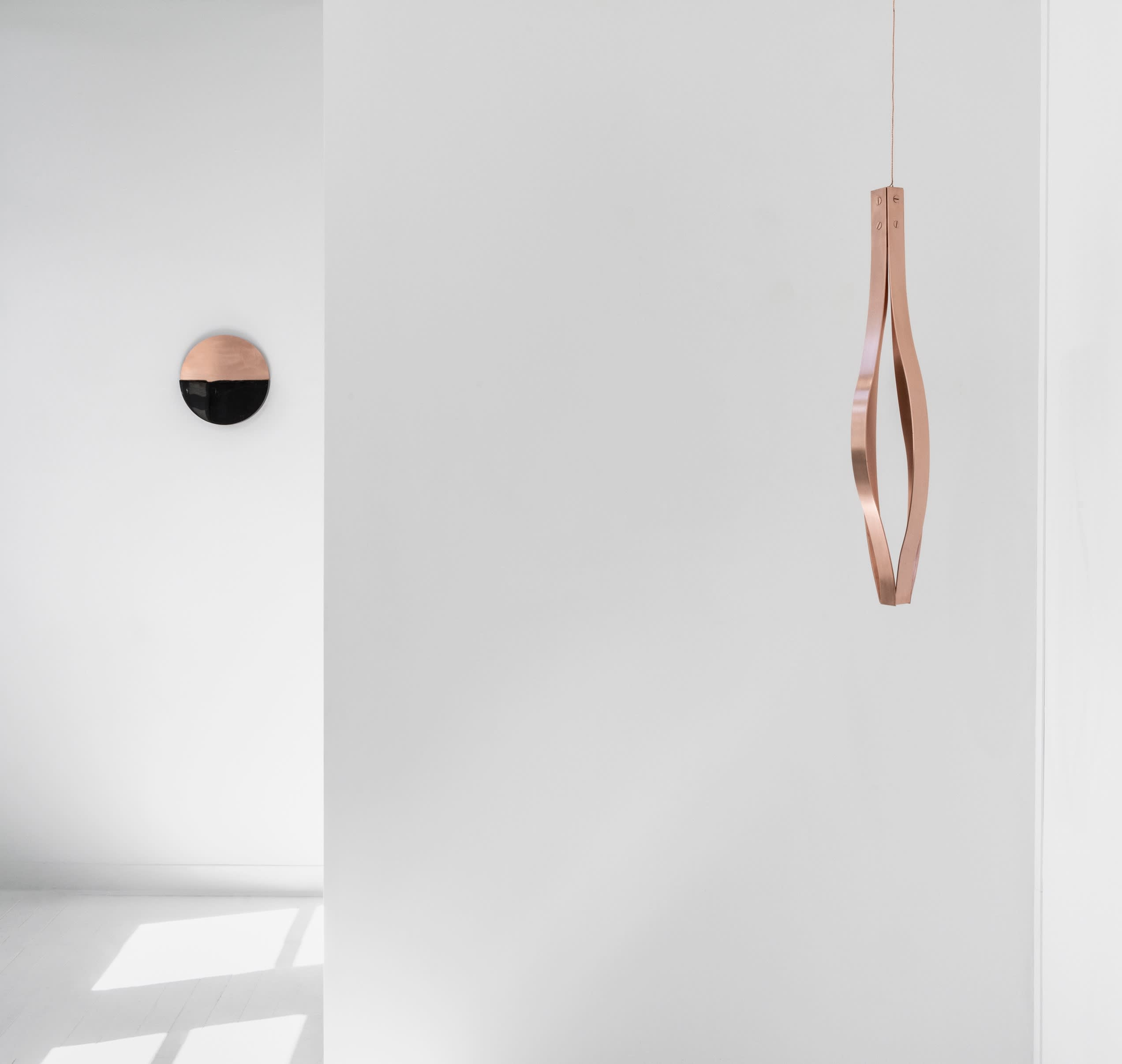
Installation view: 2023, Karian Amaya, Alba (L), 2023, Copper and marble; Oda al Aire (R), 2023, Copper
Have you overcome any memorable roadblocks or struggles with running the gallery that you could share with us?
I think it was an unexpected shipping delay for our art fair booth. We had 7 crates stuck in Mexico. We made many calls and it all worked out at the end. It was memorable!
Do you have any advice for artists who are interested in showing their work and finding gallery representation?
Focus on the work. Try to remove distractions and spend your best hours in the studio. Find your community of artists and curators, and support each other. I also think it’s important to put your best work out each time, even if it’s just a weekend open studios or a small group show. That’s usually where artists first get discovered. Good documentation of your work and past shows is essential. Many curators and galleries research Instagram and artist websites.
How do you find the artists that you show?
I came across Annesta Le, gallery’s first artist, online. I was really taken by her subtle and unique neon and wanted to see them in person. At the time I was too shy to reach out for a studio visit (I’m not any more, thankfully) so I asked a mutual friend to introduce us. How I meet artists is different each time: I discover amazing talents when I’m invited to be a studio visitor at programs such as NARS Foundation and Residency Unlimited; I collected and lived with a few artists' work before I showed them in the gallery; I have also discovered some artists after they reached out and introduced themselves to me.
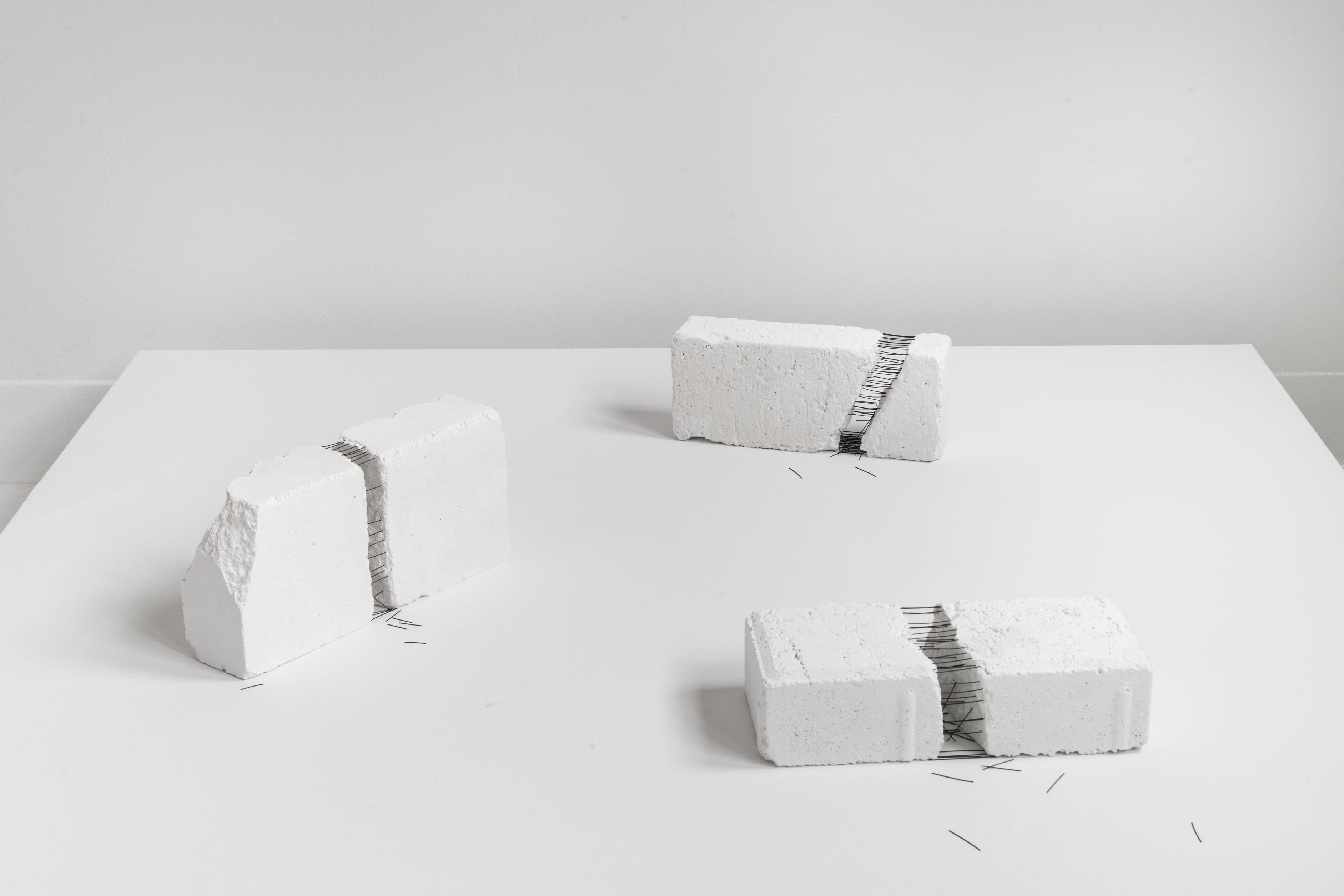
Installation view: 2023, Sun Young Kang, Line-Drawing I: New Existence, 2019 Metal wire, brick, paint
What stands out to you when initially meeting an artist that you are considering working with?
The work has to stand out and speak to me first. I trust my intuition and can recognize it when a work really moves me. It starts with an emotional and spontaneous response, a spark. Then I become much more methodical with research and do rounds of studio visits. I always allow myself to spend generous time learning about an artist’s work before I decide to present them in the gallery. It’s a very careful and considered process. I look for authenticity, craftsmanship, courage and clarity in their work. I also consider what makes most sense in bringing a new artist into the program–how would this work appear next to existing gallery artists’ and what new dialogues we can create. I ask myself: can I stand by this work now and later? Do I feel passionate about finding an audience for this artist? Does the artist understand and value our relationship? We are going on a long journey together.
Do you have any tips or advice that someone has shared with you that you have found particularly helpful?
Pay attention to basics, understand the numbers and learn how small businesses work.
What’s coming up next for you and the gallery?
We have a two-person show opening in March, by Brooklyn-based Xingze Li and Philadelphia-based Sarah Pater. This year, we have four solo exhibitions by gallery artists: Sun Young Kang, Mar Ramon Soriano, Margrethe Aanestad and Karian Amaya. I’m also very excited about an institutional collaboration in New York City.
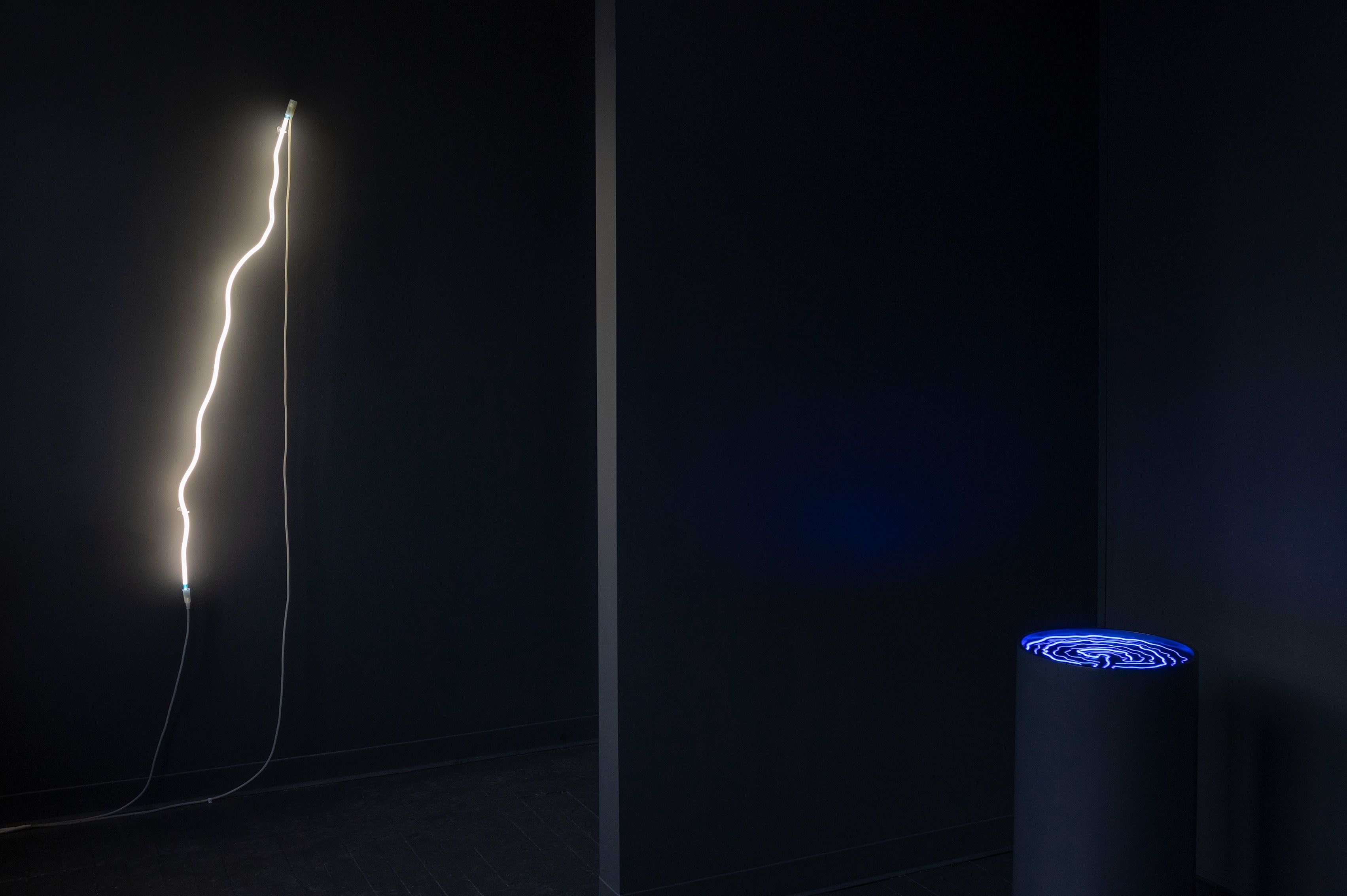
Installation view: 2023, Annesta Le, Beacon (L) neon, Labyrinth (R), neon, mineral oil, wood, 2023.







